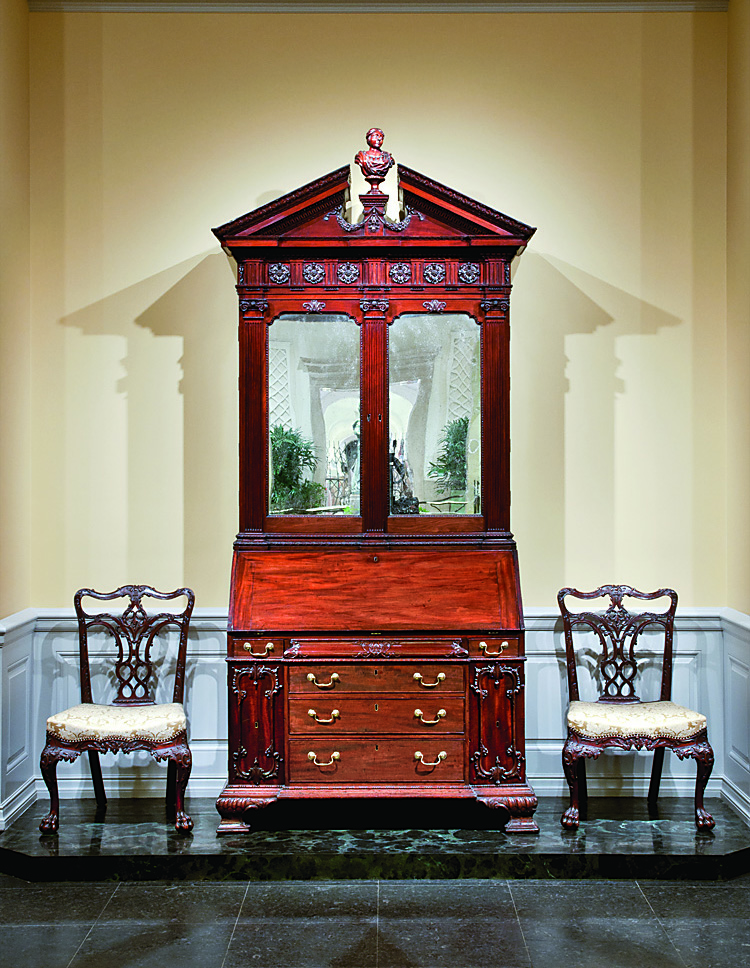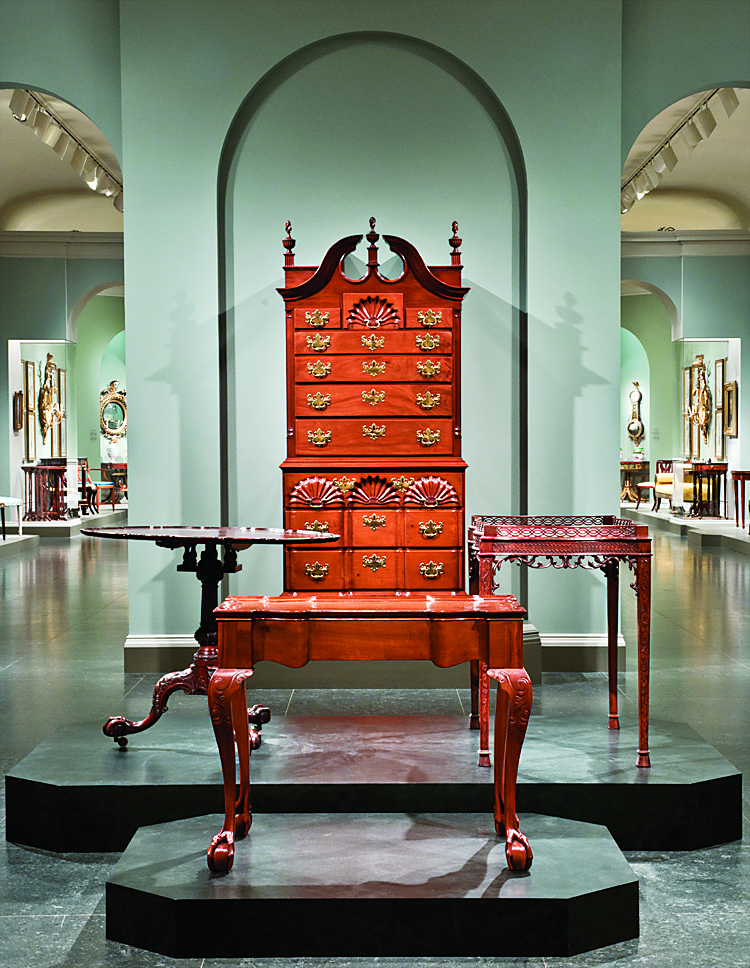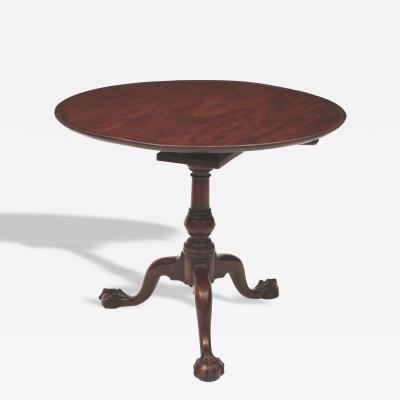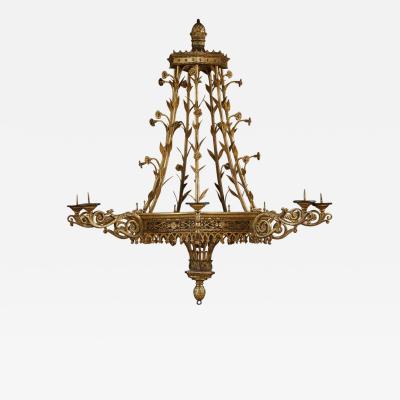The Kaufman Collection: Masterpieces of American Furniture
This archive article was originally published in the 13th Anniversary issue of Antiques & Fine Art magazine.
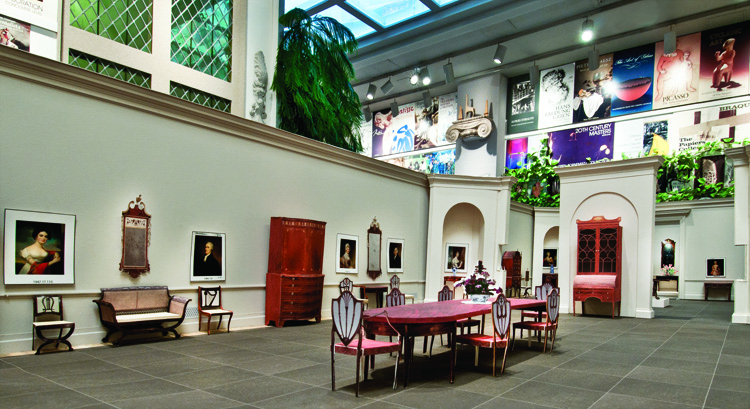
- Fig. 1: Meticulously assembled by the design studio, the detailed one-inch-scale furniture models were utilized by designers and curators to quickly and accurately inform decisions throughout the exhibition design process. Photography by Rob Shelley. Courtesy National Gallery of Art, Washington, D.C.
Even in a long museum career, it is unusual to have the pleasure of working with the same objects more than once. I first met George M. and Linda H. Kaufman in the National Gallery of Art’s design studio in 1979, when they were lenders to In Praise of America: Masterworks of American Decorative Arts, 1650–1830. Subsequently, in 1986 the Gallery devoted ten rooms to an extensive exhibition based exclusively on the Kaufmans’ collection. A wonderful relationship was forged between the collectors and the Gallery, and the recent opening of Masterpieces of American Furniture from the Kaufman Collection, 1700–1830, celebrates the Kaufmans’ generous promised gift to the National Gallery. This permanent installation consists of more than one hundred objects from one of the most important privately assembled collections of early American furniture and decorative arts. The addition of the Kaufman Collection significantly enhances the National Gallery’s decorative arts holdings, providing open access in our nation’s capital to seminal examples of early American furniture.

- Fig. 4: Large case pieces, such as a Charleston clothes press, ca. 1785–1800, and a tambour desk and bookcase, ca. 1790–1810, attributed to John Aitken (d. 1839), brilliantly fill the expansive gallery. Portraits of Abigail and John Adams by Gilbert Stuart (1755–1828), two early nineteenth-century portraits by John Eichholtz (1776–1842), and two New York looking glasses, ca. 1790–1810, balance the remaining wall space. The center of the gallery provided the perfect opportunity to display a lengthy three-part dining table, ca. 1795–1800, attributed to John Townsend. Photography by Rob Shelley. Courtesy National Gallery of Art, Washington, D.C.
The central galleries on the ground floor of the Gallery’s West Building have become the new permanent home for the Kaufman Collection. Previously used for temporary exhibitions, these galleries have hosted many memorable shows, including Treasures of Tutankhamun and American Light: The Luminist Movement, 1850–1875. For the Kaufman Collection, we divided this prominent space (more than 4,000 square feet) into four areas in a roughly chronological manner, with stylistic and regional subsections. Two of the challenges we faced were that the central galleries are accessible from either end, and they necessitated strong groupings of objects to compete with the long axial views. Integral to the development and design of the presentation was the construction of an intricate one-inch-scale model of the gallery space, including detailed miniature reproductions of the entire collection (Fig. 1).
At the entrance to the installation (from Sixth Street), we feature a monumental Philadelphia rococo desk and bookcase, flanked by two robustly carved chairs (Fig. 2). Also in this first gallery are some of the earliest and most dazzling pieces, which date from around 1700 to 1760. Incorporating a variety of decorative arts, we enhanced the displays with two recently acquired early looking glasses hung over a marble-topped table and a rare japanned dressing table.
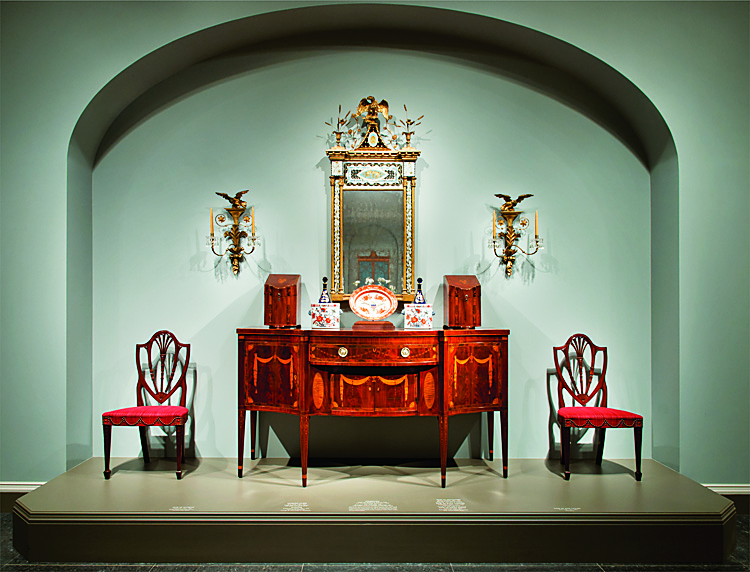
- Fig. 5: Flanked by a pair of mahogany New York side chairs, ca. 1785–1800, the lavishly inlayed sideboard, ca. 1793–1795, labeled by Mills and Deming of New York, provides an elegant display area for a selection of Chinese porcelains and a pair of American knife boxes, ca. 1785–1805. The gilded eagle atop the New York églomisé looking glass, ca. 1790–1815, is grouped with a pair of American eagle sconces, ca. 1795–1835, successfully completing this wall. Photography by Rob Shelley. Courtesy National Gallery of Art, Washington, D.C.
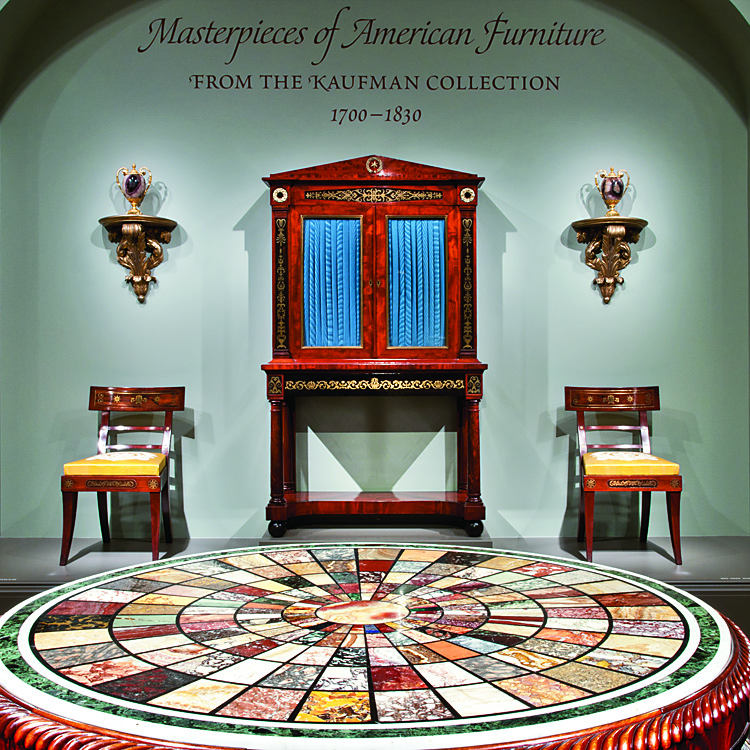
- Fig. 6: Anchoring the center of the room is an impressive specimen-top center table, ca. 1827–1830; the massive frame was crafted by Philadelphia furniture maker Anthony Quervelle (1789–1856). Creating a striking backdrop, are a pair of side chairs, ca. 1815–1825, placed alongside a writing table and bookcase, ca. 1815–1830; each piece features bold buhlwork marquetry. An ornate pair of Blue-John urns from Derbyshire, England, ca. 1770, rest on recently acquired New York brackets, ca. 1820–1830. Photography by Rob Shelley. Courtesy National Gallery of Art, Washington, D.C.
In the second room, select groupings of furniture draw attention to diverse regional characteristics that had developed in the colonial centers by the third quarter of the eighteenth century (Fig. 3). A vigorously carved Philadelphia high chest is placed opposite an elegant Newport high chest, while the center of the room is dominated by an extraordinary Providence chest-on-chest. Dividing the rococo from the Federal are two projecting cases that display four exceedingly rare American porcelains, made at the American China Manufactory founded by Gousse Bonnin (b. ca. 1741–d. ca. 1779) and George Anthony Morris (1742/5–1773) of Philadelphia, alongside an early glass tumbler crafted by John Frederick Amelung (active 1784 to about 1795). Throughout the space hang American portraits from the Gallery’s permanent collection, including seven recently conserved paintings by Gilbert Stuart (1755–1828), seen with exceptional porcelains from the Kaufmans’ collection (Fig. 4). Highlights of the Federal room include a magnificently inlayed New York sideboard made and labeled by William Mills and Simeon Deming (active 1793–1798) and masterworks by renowned Boston furniture makers John (1738–1818) and Thomas Seymour (1771–1848) and Duncan Phyfe (1770–1854) (Fig. 5).
A striking finale to the installation features Empire Style objects, including one of the finest specimen marble-top tables, installed on a faux-marble plinth in the center of the room (Fig. 6). Ornately painted and archeologically inspired furniture, popular during the first quarter of the nineteenth century, is epitomized by the scrolled Grecian couch attributed to John and Hugh Finlay of Baltimore. Contributing to the grandeur of this gallery, sixteen botanical watercolors by Pierre Joseph Redouté (1759–1840) are double-hung on either side of a pair of exquisite New York girandole mirrors.
The precedent of excellence established by the Kaufmans while building this remarkable collection dovetails seamlessly with the National Gallery’s mission of collecting, preserving, and exhibiting at the highest levels.















